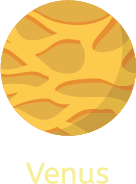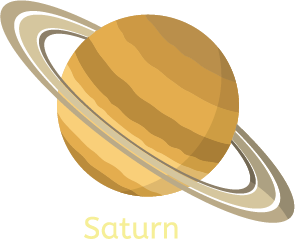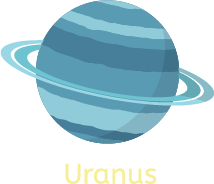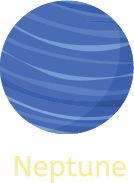What is it?
Our solar system is a planetary system that orbits a star we call the Sun and everything that travels around it — the planets Mercury, Venus, Earth, Mars, Jupiter, Saturn, Uranus, and Neptune, dozens of moons and millions of asteroids, comets and meteoroids.
The planetary system we call home is located in an outer spiral arm of the vast Milky Way galaxy. It consists of the Sun (our star) and everything that orbits around it. This includes the eight planets and their natural satellites (such as our moon), dwarf planets and their satellites, as well as asteroids, comets and countless particles of smaller debris.
Most stars host their own planets, so there are likely tens of billions of other solar systems in the Milky Way galaxy alone. We've discovered thousands of planetary systems around other stars.
ONE OF BILLIONS
Our solar system is made up of a star, eight planets and countless smaller bodies such as dwarf planets, asteroids and comets
A LONG WAY ROUND
It takes our solar system about 230 million years to complete one orbit around the galactic center.
SPIRALING THROUGH SPACE
There are three general kinds of galaxies: elliptical, spiral and irregular. The Milky Way is a spiral galaxy.
LIFE AS WE KNOW IT
Our solar system is the only one known to support life. So far, we only know of life on Earth, but we’re looking for more everywhere we can.
More information about the Solar System

the heart of our solar system, is a yellow dwarf star, a hot ball of glowing gases.
Its gravity holds the solar system together, keeping everything from the biggest planets to the smallest particles of debris in its orbit. Electric currents in the Sun generate a magnetic field that is carried out through the solar system by the solar wind—a stream of electrically charged gas blowing outward from the Sun in all directions.
The connection and interactions between the Sun and Earth drive the seasons, ocean currents, weather, climate, radiation belts and aurorae. Though it is special to us, there are billions of stars like our Sun scattered across the Milky Way galaxy.
BIGGEST
If the Sun were as tall as a typical front door, Earth would be about the size of a nickel
MOST MASSIVE
The Sun is the center of our solar system and makes up 99.8 percent of the mass of the entire solar system.
NUCLEAR FUSION
The Sun's core is about 27 million degrees Fahrenheit (15 million degrees Celsius).
ENERGY FOR LIFE
Without the Sun's intense energy, there would be no life on Earth.
More information about the Sun

The smallest planet in our solar system and nearest to the Sun, Mercury is only slightly larger than Earth's Moon.
From the surface of Mercury, the Sun would appear more than three times as large as it does when viewed from Earth, and the sunlight would be as much as seven times brighter. Despite its proximity to the Sun, Mercury is not the hottest planet in our solar system – that title belongs to nearby Venus, thanks to its dense atmosphere.
SMALLEST
Mercury is the smallest planet in our solar system—only slightly larger than Earth's Moon.
INSIDER
It is the closest planet to the Sun at a distance of about 36 million miles (58 million kilometers) or 0.39 AU.
LONG DAYS, SHORT YEARS
One day on Mercury (the time it takes for Mercury to rotate or spin once with respect to the stars) takes 59 Earth days. One day-night cycle on Mercury takes 175.97 Earth days. Mercury makes a complete orbit around the Sun (a year in Mercury time) in just 88 Earth days.
TOUGH PLACE TO LIVE
No evidence for life has been found on Mercury. Daytime Temperatures can reach 430 degrees Celsius (800 degrees Fahrenheit) and drop to -180 degrees Celsius (-290 degrees Fahrenheit) at night. It is unlikely life (as we know it) could survive on this planet.
More information about Mercury.

Second planet from the Sun and our closest planetary neighbor.
Venus is similar in structure and size to Earth, but it is now a very different world. Venus spins slowly in the opposite direction most planets do. Its thick atmosphere traps heat in a runaway greenhouse effect, making it the hottest planet in our solar system—with surface temperatures hot enough to melt lead. Glimpses below the clouds reveal volcanoes and deformed mountains.
EARTH-SIZED
If the sun were as tall as a typical front door, the Earth and Venus would each be about the size of a nickel.
SECOND ROCK
Venus orbits our Sun, a star. Venus is the second closest planet to the sun at a distance of about 67 million miles (108 million km).
A DAY LONGER THAN A YEAR
One day on Venus lasts 243 Earth days because Venus spins backwards, with its sun rising in the west and setting in the east.
WATER ON VENUS
Many scientists believe water once existed on the surface. Future Venus explorers will search for evidence of an ancient ocean.
More information about Venus.

Our home planet is the third planet from the Sun, and the only place we know of so far that’s inhabited by living things.
While Earth is only the fifth largest planet in the solar system, it is the only world in our solar system with liquid water on the surface. Just slightly larger than nearby Venus, Earth is the biggest of the four planets closest to the Sun, all of which are made of rock and metal.
The name Earth is at least 1,000 years old. All of the planets, except for Earth, were named after Greek and Roman gods and goddesses. However, the name Earth is a Germanic word, which simply means “the ground.”
AS THE WORLD TURNS
A day on Earth is 24 hours. Earth makes a complete orbit around the sun (a year in Earth time) in about 365 days.
BREATHE EASY
Earth's atmosphere is 78 percent nitrogen, 21 percent oxygen and 1 percent other ingredients—the perfect balance to breathe and live.
ORBITAL SCIENCE
Many orbiting spacecraft study the Earth from above as a whole system—observing the atmosphere, ocean, glaciers, and the solid earth.
PROTECTIVE SHIELD
Our atmosphere protects us from incoming meteoroids, most of which break up in our atmosphere before they can strike the surface.
More information about Earth.

The fourth planet from the Sun, Mars is a dusty, cold, desert world with a very thin atmosphere. This dynamic planet has seasons, polar ice caps, extinct volcanoes, canyons and weather.
Mars is one of the most explored bodies in our solar system, and it's the only planet where we've sent rovers to roam the alien landscape.
These robotic explorers have found lots of evidence that Mars was much wetter and warmer, with a thicker atmosphere, billions of years ago.
SMALL PLANET
If the Sun were as tall as a typical front door, Earth would be the size of a dime, and Mars would be about as big as an aspirin tablet.
LONGER DAYS
One day on Mars takes a little over 24 hours. Mars makes a complete orbit around the Sun (a year in Martian time) in 687 Earth days.
RUGGED TERRAIN
Mars is a rocky planet. Its solid surface has been altered by volcanoes, impacts, winds, crustal movement and chemical reactions.
TOUGH PLACE FOR LIFE
At this time, Mars' surface cannot support life as we know it. Current missions are determining Mars' past and future potential for life.
More information about Mars.

Jupiter has a long history surprising scientists—all the way back to 1610 when Galileo Galilei found the first moons beyond Earth. That discovery changed the way we see the universe.
Fifth in line from the Sun, Jupiter is, by far, the largest planet in the solar system – more than twice as massive as all the other planets combined.
Jupiter's familiar stripes and swirls are actually cold, windy clouds of ammonia and water, floating in an atmosphere of hydrogen and helium. Jupiter’s iconic Great Red Spot is a giant storm bigger than Earth that has raged for hundreds of years.
THE GRANDEST PLANET
Eleven Earths could fit across Jupiter’s equator. If Earth were the size of a grape, Jupiter would be the size of a basketball.
SHORT DAY/LONG YEAR
Jupiter rotates once about every 10 hours (a Jovian day), but takes about 12 Earth years to complete one orbit of the Sun (a Jovian year).
WHAT'S INSIDE
Jupiter is a gas giant and so lacks an Earth-like surface. If it has a solid inner core at all, it’s likely only about the size of Earth.
MASSIVE WORLD, LIGHT ELEMENTS
Jupiter's atmosphere is made up mostly of hydrogen (H2) and helium (He).
More information about Jupiter.

Saturn is the sixth planet from the Sun and the second largest planet in our solar system.
Adorned with thousands of beautiful ringlets, Saturn is unique among the planets. It is not the only planet to have rings—made of chunks of ice and rock—but none are as spectacular or as complicated as Saturn's.
Like fellow gas giant Jupiter, Saturn is a massive ball made mostly of hydrogen and helium.
A COLOSSAL PLANET
Nine Earths side by side would almost span Saturn’s diameter. That doesn’t include Saturn’s rings.
IN DIM LIGHT
Saturn is the sixth planet from our Sun (a star) and orbits at a distance of about 886 million miles (1.4 billion kilometers) from the Sun.
GAS GIANT
Saturn is a gas-giant planet and therefore does not have a solid surface like Earth’s. But it might have a solid core somewhere in there.
GLORIOUS RINGS
Saturn has the most spectacular ring system, with seven rings and several gaps and divisions between them.
More information about Saturn.

The composition of Uranus' clouds had long been a mystery. In April 2017, a global research team found hydrogen sulfide, the odiferous gas that most people avoid, in Uranus’ cloud tops—a striking difference from the gas giant planets located closer to the Sun.
The first planet found with the aid of a telescope, Uranus was discovered in 1781 by astronomer William Herschel, although he originally thought it was either a comet or a star. It was two years later that the object was universally accepted as a new planet, in part because of observations by astronomer Johann Elert Bode. Herschel tried unsuccessfully to name his discovery Georgium Sidus after King George III. Instead the planet was named for Uranus, the Greek god of the sky, as suggested by Johann Bode.
GASSY
Uranus has an atmosphere made mostly of molecular hydrogen and atomic helium, with a small amount of methane.
ICE GIANT
Uranus is an ice giant. Most of its mass is a hot, dense fluid of "icy" materials – water, methane and ammonia – above a small rocky core.
MANY MOONS
Uranus has 27 known moons, and they are named after characters from the works of William Shakespeare and Alexander Pope.
A BIT LONELY
Voyager 2 is the only spacecraft to fly by Uranus. No spacecraft has orbited this distant planet to study it at length and up close.
More information about Uranus.

Dark, cold and whipped by supersonic winds, ice giant Neptune is the eighth and most distant planet in our solar system.
More than 30 times as far from the Sun as Earth, Neptune is the only planet in our solar system not visible to the naked eye and the first predicted by mathematics before its discovery. In 2011 Neptune completed its first 165-year orbit since its discovery in 1846.
NASA's Voyager 2 is the only spacecraft to have visited Neptune up close. It flew past in 1989 on its way out of the solar system.
ICE GIANT
Neptune is an ice giant. Most of its mass is a hot, dense fluid of "icy" materials – water, methane and ammonia – above a small rocky core.
ONE VOYAGE THERE
Voyager 2 is the only spacecraft to have visited Neptune. No spacecraft has orbited this distant planet to study it at length and up close.
LIFELESS
Neptune cannot support life as we know it.
ONE COOL FACT
Because of dwarf planet Pluto’s elliptical orbit, Pluto is sometimes closer to the Sun (and us) than Neptune is.
More information about Neptune.
Click Button on top Right:
"Start Flying"
This will lock text scrolling. Then use the scroll wheel to fly thought the Stars
"Play Sound"
Plays ambient music while you fly through the stars.
Please note that the browser you are using my automatically block media from playing, please change and check the necessary settings for media playback.